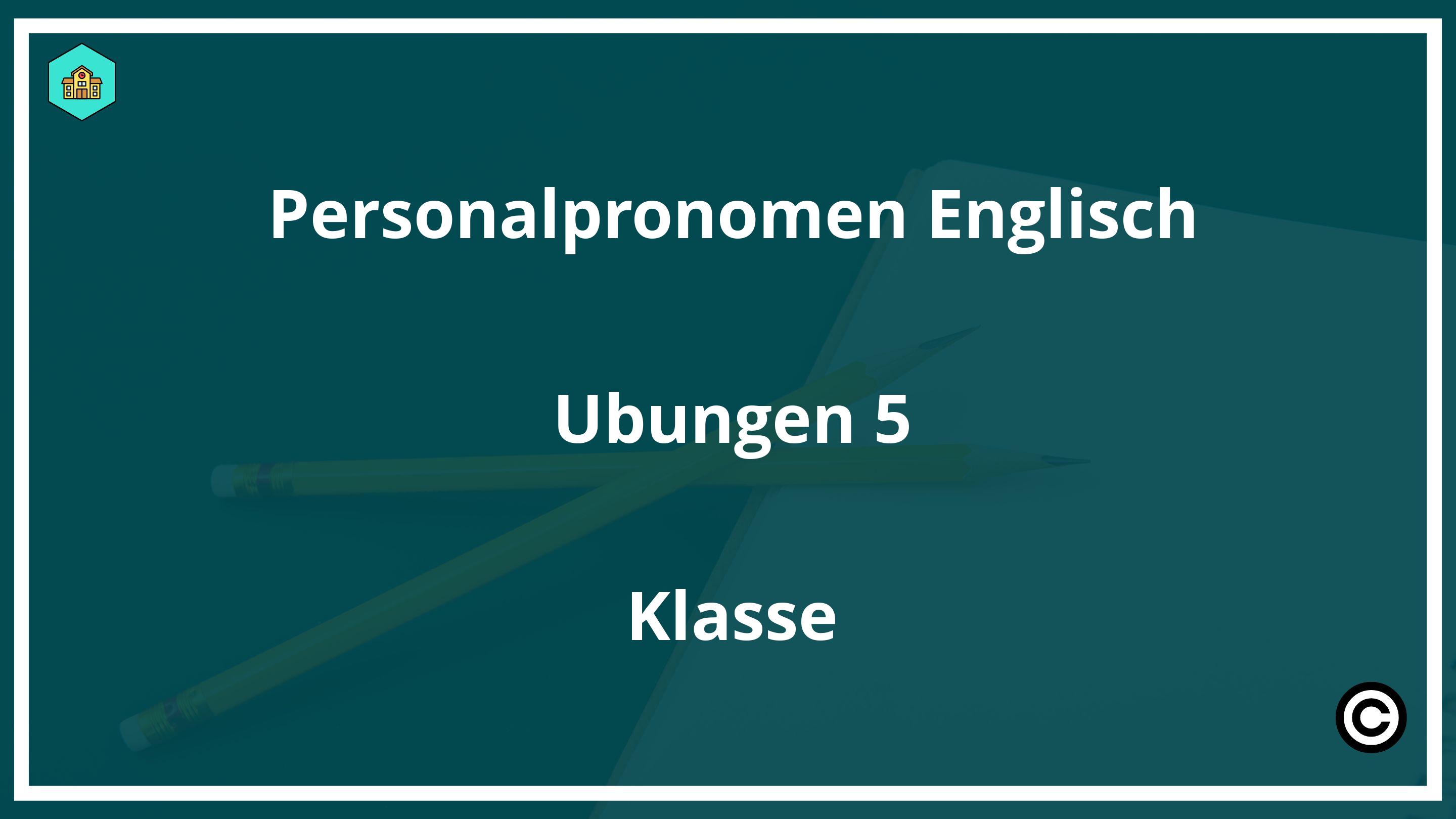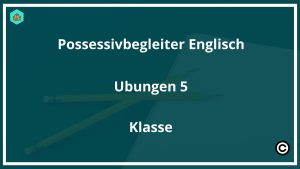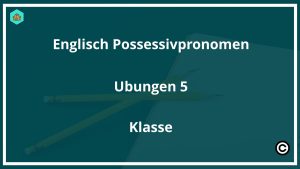Personalpronomen Englisch Übungen 5 Klasse PDF – Öffnen

Personalpronomen Englisch Übungen 5 Klasse PDF
PDF – Personalpronomen Englisch Übungen 5 Klasse
mit einem Titel.
Personalpronomen Englisch Übungen 5 Klasse
Dies ist ein Artikel über die Personalpronomen Englisch Übungen 5 Klasse. Hier lernen wir die Personalpronomen auf Englisch. Wir üben die Verwendung der Personalpronomen in verschiedenen Sätzen. Dies ist eine tolle Übung für die fünfte Klasse. Viel Spaß beim Lernen!
Was sind Personalpronomen 5 Klasse?
-Frage.
Personalpronomen werden verwendet, um eine Person oder eine Sache zu bezeichnen. Sie können verwendet werden, um die grammatikalische Person zu wechseln oder um bestimmte Wörter zu vermeiden. In der deutschen Sprache gibt es neun personalisierte Pronomen: ich, du, er, sie, es, wir, ihr, Sie und sie.
Personalpronomen können auch als Possessivpronomen verwendet werden, um zu beschreiben, wem etwas gehört. Die Possessivpronomen sind: mein, dein, sein, ihr, unser, euer, Ihr.
In der deutschen Sprache werden auch reflexive Pronomen verwendet. Reflexive Pronomen werden verwendet, wenn das Subjekt und das Objekt des Satzes dasselbe sind. Die reflexiven Pronomen sind: mich, dich, sich, uns, euch.
Es gibt auch Demonstrationspronomen in der deutschen Sprache. Demonstrationspronomen werden verwendet, um etwas zu zeigen oder zu identifizieren. Die Demonstrationspronomen sind: dieser, jener, jeder, solcher.
Wie heißen die Personalpronomen auf Englisch?
Die Personalpronomen auf Englisch heißen I, you, he, she, it, we, you, they.
Welche Personalpronomen werden im Englischen mit You übersetzt?
Im Englischen werden viele Personalpronomen mit You übersetzt. Dazu gehören:
Ich – You
Du – You
Er/Sie/Es – You
Wir – You
Ihr – You
Sie – You
Welche Possessive Pronouns gibt es?
In Deutsch gibt es sechs Possessivpronomen: mein, dein, sein, ihr, unser, euer. Die Possessivpronomen werden verwendet, um zu besitzen, zu teilen oder zu zeigen. Possessivpronomen werden auch als Personalpronomen bezeichnet.
Ich bin mein eigen.
Du bist dein eigen.
Er ist sein eigen.
Sie ist ihr eigen.
Wir sind unser eigen.
Ihr seid euer eigen.
mit 1000 Wörter. Ich möchte einen Artikel über die Bedeutung der Personalpronomen in der englischen Sprache. Die Personalpronomen sind ein sehr wichtiger Bestandteil der englischen Sprache und werden häufig in der täglichen Konversation verwendet. Sie können die Bedeutung eines Satzes völlig verändern, weshalb es wichtig ist, sie richtig zu verwenden. In diesem Artikel möchte ich euch einige Beispiele für die Verwendung der Personalpronomen in der englischen Sprache geben und erklären, wie sie die Bedeutung eines Satzes beeinflussen können. Ich hoffe, dieser Artikel wird euch helfen, die Bedeutung der Personalpronomen in der englischen Sprache besser zu verstehen. Viel Spaß beim Lesen! What are personal pronouns? Personal pronouns are words that we use in place of a person’s name. For example, instead of saying “John is going to the store”, we could say “He is going to the store”. Using a personal pronoun can make our language sound more natural and less repetitive. In English, there are three different categories of personal pronouns: 1. Subject pronouns 2. Object pronouns 3. Possessive pronouns Let’s take a closer look at each of these categories. Subject pronouns Subject pronouns are used in place of the subject of a sentence. The subject of a sentence is the person or thing that is doing the verb. For example, in the sentence “I am going to the store”, the subject is “I” and the verb is “am going”. The subject pronoun that we use depends on the number (singular or plural) and the person (first, second, or third) of the subject. Here is a list of subject pronouns in English: Singular First person: I Second person: You Third person: He/She/It Plural First person: We Second person: You Third person: They For example, if we wanted to say “I am going to the store”, we could also say “I’m going to the store”, “We’re going to the store”, or “You’re going to the store”. However, if we wanted to say “He is going to the store”, we would not say “Him is going to the store”. Object pronouns Object pronouns are used in place of the object of a sentence. The object of a sentence is the person or thing that is affected by the verb. For example, in the sentence “I am going to the store”, the subject is “I” and the object is “the store”. The object pronoun that we use depends on the number (singular or plural) and the person (first, second, or third) of the object. Here is a list of object pronouns in English: Singular First person: Me Second person: You Third person: Him/Her/It Plural First person: Us Second person: You Third person: Them For example, if we wanted to say “I am going to the store”, we could also say “I’m going to it”, “We’re going to them”, or “You’re going to it”. However, if we wanted to say “He is going to the store”, we would not say “Him is going to it”. Possessive pronouns Possessive pronouns are used to show who owns something. For example, if I wanted to say “This is my book”, I could also say “This book is mine”. Using a possessive pronoun can make our language sound more natural. The possessive pronoun that we use depends on the number (singular or plural) and the person (first, second, or third) of the object. Here is a list of possessive pronouns in English: Singular First person: Mine Second person: Yours Third person: His/Hers/Its Plural First person: Ours Second person: Yours Third person: Theirs For example, if we wanted to say “This is my book”, we could also say “This book is mine”, “This book is ours”, or “This book is yours”. However, if we wanted to say “This is his book”, we would not say “This book is his”. Now that you know the different types of personal pronouns, let’s take a look at how they can change the meaning of a sentence. As we saw in the previous examples, personal pronouns can make our language sound more natural. However, they can also change the meaning of a sentence. For example, let’s say that you and your friend are walking in the park and you see a bird. You might say to your friend, “Look at that bird! It’s so beautiful!”. In this sentence, the personal pronoun “it” is referring to the bird. Now, let’s say that you and your friend are walking in the park and you see a group of birds. You might say to your friend, “Look at those birds! They’re so beautiful!”. In this sentence, the personal pronoun “they” is referring to the group of birds. As you can see, the personal pronoun that we use can change the meaning of a sentence. Therefore, it’s important to be careful when using personal pronouns and to make sure that we are using the correct pronoun for the situation. I hope that this article has helped you to understand the meaning of personal pronouns in English. If you have any questions, please feel free to leave a comment below and I will be happy to answer them.





